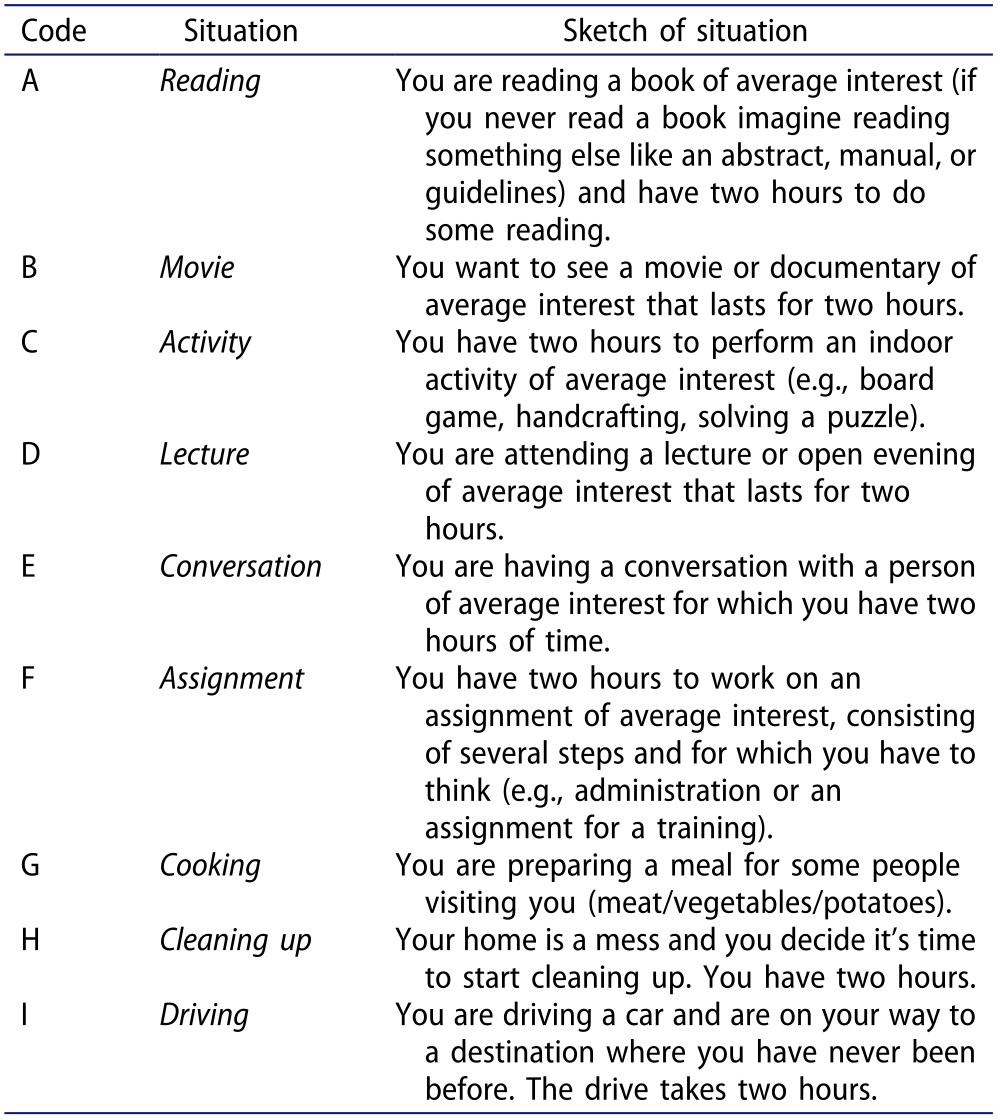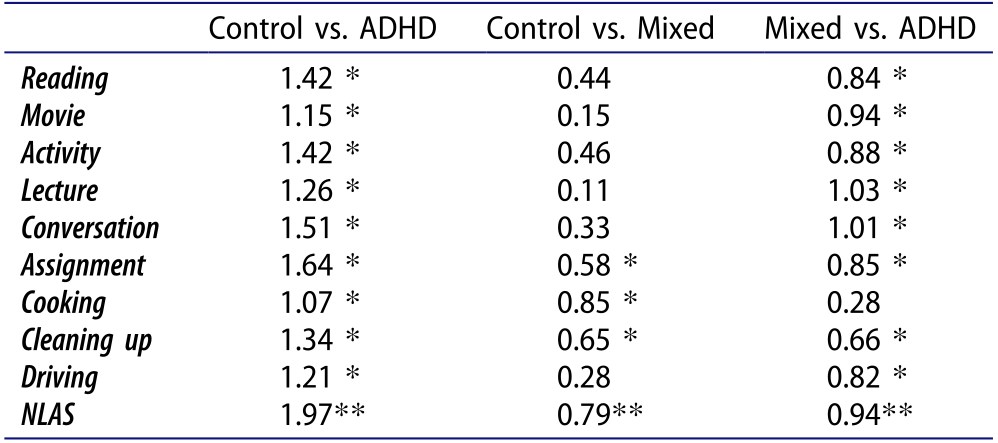Original paper
A situation-specific approach to measure attention in adults with ADHD: The everyday life attention scale (ELAS)
Abstract
This study describes the development and utility of a new self-report measure of attentional capacities of adults with Attention Deficit Hyperactivity Disorder (ADHD): the Everyday Life Attention Scale (ELAS). Different from previous attention scales, attentional capacities are rated for nine everyday situations. Study 1 investigated the factor structure, validity, and reliability of the ELAS in 1206 healthy participants. Confirmatory factor...
Figures & Tables

Figure 2. Frequency distribution (in percentages) of patients with ADHD, mixed c...

Table 1. Sketches of the nine ELAS situations.

Table 2. Fit indices of competing factor models, see Appendix C for a descriptio...

Table 3. Internal consistency (Cronbach’sα) and descriptive statistics of situat...

Table 4. Intercorrelations (Pearson correlations) between the situation scales o...

Table 5. Pearson correlations between situation scales of the ELAS and measures ...

Table 6. Comparison of situation scale scores (M � SD) of the ELAS between healt...

Table 7. Effect sizes (Cohen’s d) of pairwise group comparisons on situation sca...
Paper Details
Title
A situation-specific approach to measure attention in adults with ADHD: The everyday life attention scale (ELAS)
Published Date
Mar 14, 2018
Volume
26
Issue
5
Pages
411 - 440
TrendsPro
You’ll need to upgrade your plan to Pro
Looking to understand a paper’s academic impact over time?
- Scinapse’s Citation Trends graph enables the impact assessment of papers in adjacent fields.
- Assess paper quality within the same journal or volume, irrespective of the year or field, and track the changes in the attention a paper received over time.
Citation AnalysisPro
You’ll need to upgrade your plan to Pro
Looking to understand the true influence of a researcher’s work across journals & affiliations?
- Scinapse’s Top 10 Citation Journals & Affiliations graph reveals the quality and authenticity of citations received by a paper.
- Discover whether citations have been inflated due to self-citations, or if citations include institutional bias.